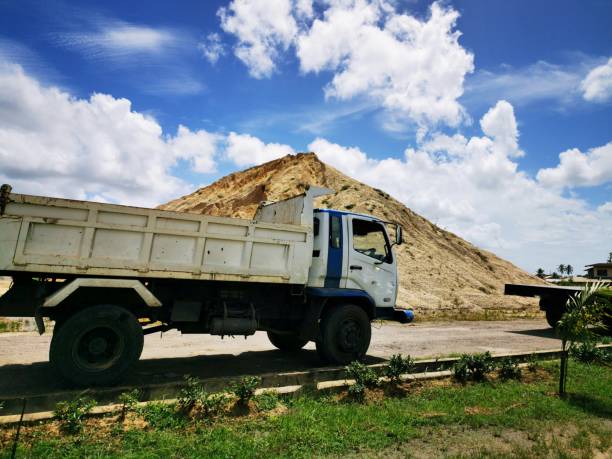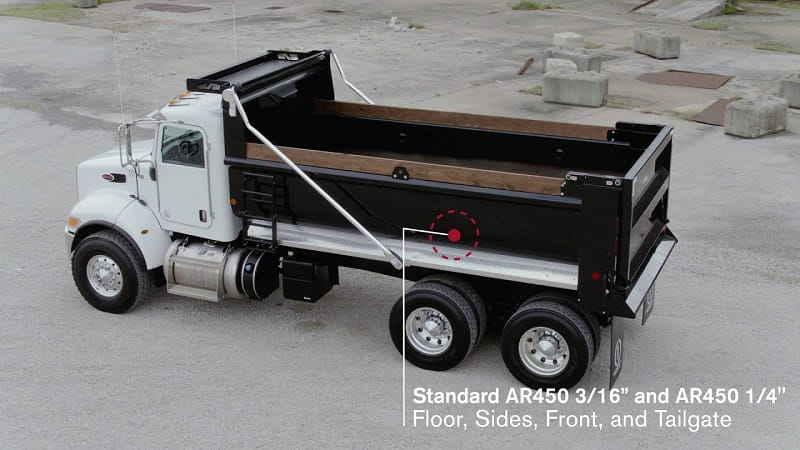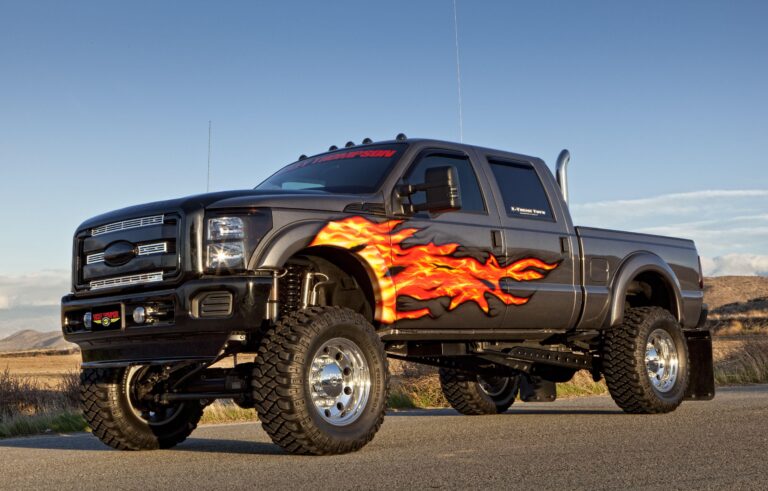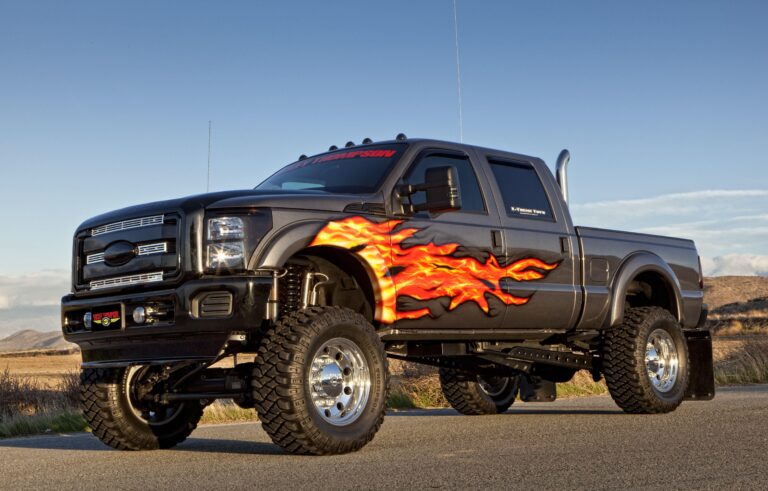How Many Yards In A Tri Axle Dump Truck: A Comprehensive Guide to Capacity and Efficiency
How Many Yards In A Tri Axle Dump Truck: A Comprehensive Guide to Capacity and Efficiency cars.truckstrend.com
When it comes to moving large volumes of materials in construction, landscaping, and aggregate industries, the tri-axle dump truck is a workhorse. Understanding "how many yards in a tri-axle dump truck" is not just a matter of curiosity; it’s a critical piece of information for project planning, cost estimation, logistical efficiency, and ensuring legal compliance. Misjudging this capacity can lead to costly delays, multiple unnecessary trips, or even dangerous overloading.
This comprehensive guide will delve into the typical capacities of tri-axle dump trucks, explore the numerous factors that influence these figures, provide practical advice for estimation, and address common questions to help you make informed decisions for your hauling needs.
How Many Yards In A Tri Axle Dump Truck: A Comprehensive Guide to Capacity and Efficiency
Understanding the Tri-Axle Dump Truck
Before we dive into yardage, let’s clarify what a tri-axle dump truck is. Unlike a standard tandem-axle dump truck (which has two axles at the rear), a tri-axle dump truck features three axles in the rear configuration. This typically consists of one steering axle at the front, two drive axles in the middle, and a third, often liftable, "tag" or "pusher" axle behind the drive axles.
This additional axle serves a crucial purpose: it distributes the weight of the load over a larger area, allowing the truck to legally carry a heavier payload while complying with federal and state bridge laws. This makes tri-axle trucks an excellent compromise, offering more capacity than a tandem axle but more maneuverability than a larger quad-axle or tractor-trailer setup, especially in tighter job site conditions. They are a staple for hauling materials like sand, gravel, topsoil, asphalt, demolition debris, and more.
The Core Question: How Many Yards In A Tri Axle Dump Truck?
The straightforward answer to "how many yards in a tri-axle dump truck" is: typically between 15 and 22 cubic yards. However, this is a general range, and the precise capacity can vary significantly based on several factors, which we will explore in detail.
It’s important to understand what a "cubic yard" means. A cubic yard is a volume measurement equal to a cube that is 3 feet long, 3 feet wide, and 3 feet high (3 ft x 3 ft x 3 ft = 27 cubic feet). When discussing dump truck capacity, two terms are often used interchangeably, but they have distinct meanings:
- Struck Capacity: This refers to the volume of material a truck can hold when the material is leveled off even with the top of the truck’s bed walls. This is the precise, geometric volume of the bed.
- Heaped Capacity: This refers to the volume a truck can hold when the material is piled up above the top of the bed walls, forming a cone or mound. Most loose materials like sand, gravel, or mulch are hauled in a "heaped" condition. When someone asks about a truck’s capacity in yards, they are usually referring to its heaped capacity. Heaped capacity can be 20-30% more than struck capacity, depending on the material’s angle of repose.

Therefore, a tri-axle truck with a 15-yard struck capacity might realistically carry 18-20 yards of heaped material like sand or gravel.
Factors Influencing Tri-Axle Dump Truck Capacity
While the physical dimensions of the dump body set a baseline, numerous other factors dictate the effective number of yards a tri-axle dump truck can haul:

-
Truck Body Dimensions and Design:
- Length, Width, and Height: The most obvious factor. A longer, wider, or taller dump body will naturally have a greater volume capacity. Standard dimensions vary, but a common tri-axle bed might be 16-18 feet long, 8 feet wide, and 4-5 feet high.
- Material of Construction: Truck beds are typically made from steel or aluminum. Aluminum beds are lighter, which allows for a higher payload by weight, potentially meaning more volume for dense materials before hitting weight limits. Steel is more durable for abrasive materials but heavier.

-
Material Density and Type:
This is arguably the most critical factor after the physical bed size. A cubic yard is a measure of volume, but different materials have vastly different weights. A truck’s legal capacity is almost always dictated by weight limits (Gross Vehicle Weight Rating – GVWR) rather than pure volume.- Light Materials: Mulch, wood chips, light topsoil. A tri-axle can often be filled to its maximum heaped volume capacity without exceeding weight limits.
- Medium Materials: Sand, gravel, crushed stone, fill dirt. These materials are dense enough that a tri-axle might hit its weight limit before it’s completely filled to its maximum heaped volume. For example, 20 cubic yards of sand might weigh 30-35 tons, which could be at or near the legal limit for a tri-axle.
- Heavy Materials: Wet concrete, asphalt millings, broken concrete/asphalt, demolition debris, large rocks. These materials are very dense. A tri-axle will almost certainly reach its weight limit well before its volume capacity is met. You might only be able to haul 10-12 cubic yards of broken concrete in a truck rated for 20 yards of sand due to weight restrictions.
-
Gross Vehicle Weight Rating (GVWR) and Legal Weight Limits:
- GVWR: Each truck has a maximum operating weight specified by the manufacturer.
- Axle Weight Limits: State and federal Department of Transportation (DOT) regulations impose strict limits on the maximum weight that can be carried on individual axles and groups of axles. The "bridge formula" is used to calculate maximum allowable weights based on the number of axles and the distance between them. A tri-axle configuration is designed to optimize weight distribution to comply with these laws.
- State-Specific Regulations: Weight limits can vary slightly from state to state, impacting the effective payload a truck can carry. Always confirm local regulations.
-
Truck Specifications and Age:
- Engine Power and Transmission: While not directly affecting volume, a more powerful engine and robust transmission are necessary to handle heavier loads efficiently and safely.
- Suspension System: Air ride or heavy-duty spring suspensions impact how well the truck handles heavy loads and influences the overall GVWR.
- Tire Capacity: Tires have specific load ratings that must not be exceeded.
Calculating and Estimating Yardage
To get a precise "struck" cubic yardage for a dump truck bed, you can use a simple formula:
Length (ft) x Width (ft) x Height (ft) / 27 = Cubic Yards (Struck)
Example:
If a dump bed is 16 feet long, 8 feet wide, and 4 feet high:
(16 ft x 8 ft x 4 ft) / 27 = 512 cubic feet / 27 = 18.96 cubic yards (struck)
For heaped capacity, you’ll need to estimate. A general rule of thumb is to add 20-30% to the struck capacity for loose, pileable materials. So, for the example above, 18.96 yards struck could be around 22-25 yards heaped, depending on the material and how it’s loaded.
Practical Advice for Accurate Estimation:
- Know Your Truck: If you own or regularly use a specific tri-axle, measure its bed dimensions accurately.
- Know Your Material: Understand the density of the material you’re hauling. A quick search for "density of [material name] per cubic yard" can give you an idea. This will help you determine if you’ll hit your weight limit before your volume limit.
- Observe and Learn: Pay attention to how many yards are delivered on site for similar materials. Over time, you’ll develop an intuitive sense of what a "20-yard load" looks like for various materials.
- Use Scales: For critical jobs, especially when dealing with dense materials, utilize truck scales. This is the only way to know your exact payload and ensure compliance with weight limits.
Practical Applications and Considerations
Understanding the yardage of a tri-axle dump truck has significant practical implications:
- Cost-Effectiveness: Maximizing each load by hauling the optimal amount of material reduces the number of trips required, saving fuel costs, driver wages, and wear and tear on the truck. This directly impacts project profitability.
- Project Planning: Accurately estimating material delivery needs is crucial for project timelines. Knowing how many loads are required helps schedule deliveries efficiently and avoids material shortages or excessive stockpiling.
- Safety: Overloading a dump truck is extremely dangerous. It compromises braking ability, steering control, and overall stability, increasing the risk of accidents. It also puts undue stress on the truck’s components, leading to premature wear and potential breakdowns.
- Legal Compliance: Avoiding fines and legal issues associated with exceeding weight limits.
- Environmental Impact: Fewer trips mean less fuel consumed and reduced emissions.
Table: Estimated Hauling Costs by Material Type (Tri-Axle Dump Truck)
Please note: These are estimated costs for illustration purposes only. Actual prices vary widely based on geographical location, fuel prices, specific company rates, haul distance, material type, and market demand. Always request a detailed quote for your specific needs. Prices can be quoted per yard, per load, or per hour.
| Material Type | Typical Tri-Axle Volume (Yards, Heaped) | Avg. Weight per Yard (Tons) | Est. Cost per Yard (USD) | Est. Cost per Load (USD) | Notes |
|---|---|---|---|---|---|
| Light Materials | |||||
| Mulch | 20 – 25+ | 0.4 – 0.6 | $15 – $30 | $300 – $750 | Often priced per load. Volume capacity is maximized. Long-distance hauling might increase per-yard cost. |
| Topsoil (loose) | 18 – 22 | 1.0 – 1.2 | $20 – $45 | $360 – $990 | Common landscaping material. Pricing varies by quality of soil. |
| Medium Materials | |||||
| Sand (washed) | 16 – 20 | 1.3 – 1.5 | $25 – $50 | $400 – $1000 | Weight often limits volume. Prices depend on type of sand (e.g., masonry, concrete). |
| Gravel (various sizes) | 15 – 19 | 1.4 – 1.6 | $30 – $60 | $450 – $1140 | Common aggregate. Weight limits usually apply. Quarry location and type of gravel impact cost. |
| Crushed Stone | 15 – 19 | 1.4 – 1.6 | $30 – $65 | $450 – $1235 | Similar to gravel, often hits weight limits before volume capacity. |
| Heavy Materials | |||||
| Asphalt Millings | 10 – 14 | 1.8 – 2.0 | $40 – $75 | $400 – $1050 | Highly dense. Volume is severely restricted by weight. Often priced per ton (or per load based on tonnage). |
| Broken Concrete/Debris | 8 – 12 | 2.0 – 2.5+ | $50 – $100+ | $400 – $1200+ | Very dense and irregular. Volume is significantly reduced due to weight. Disposal fees at dumpsites may be additional. |
| Wet Concrete (mixed) | 6 – 8 (specialized trucks) | 2.2 – 2.4 | N/A (usually per yard) | N/A (mixer trucks) | Note: Wet concrete is typically delivered by specialized concrete mixer trucks, not standard dump trucks, due to its high density and need for constant agitation. A dump truck might haul hardened broken concrete. |
Important Considerations for Pricing:
- Haul Distance: Longer distances almost always mean higher costs.
- Fuel Surcharges: Fluctuating fuel prices can add surcharges.
- Minimum Charges: Many companies have a minimum load or hourly charge.
- Loading/Unloading Time: Excessive wait times at the loading or unloading site might incur demurrage charges.
- Accessibility: Difficult-to-access sites can increase costs.
Frequently Asked Questions (FAQ)
Q1: Is a tri-axle dump truck always 20 yards?
A1: No. While 20 yards (heaped) is a common capacity for many materials like sand or gravel, the actual volume varies based on the truck’s specific bed dimensions and, critically, the type and density of the material being hauled. For very dense materials like broken concrete, it might only be 8-12 yards by volume due to weight limits.
Q2: What’s the difference between struck and heaped capacity?
A2: Struck capacity is the precise volume of the truck bed when filled level with the top. Heaped capacity includes the material piled above the bed walls, which is common for loose materials. Heaped capacity is typically 20-30% greater than struck capacity.
Q3: Can a tri-axle dump truck haul concrete?
A3: A tri-axle dump truck can haul broken or recycled concrete, but due to its high density, the volume will be significantly less than lighter materials. Wet, ready-mix concrete is transported in specialized mixer trucks.
Q4: How do I know if my tri-axle dump truck is overloaded?
A4: The most reliable way is to use a certified truck scale. Signs of overloading can include visible bulging of tires, excessive squatting of the suspension, difficulty steering, and reduced braking effectiveness. Overloading is illegal and unsafe.
Q5: Are aluminum dump beds better than steel?
A5: It depends on the application. Aluminum beds are lighter, allowing for a higher payload by weight, which is advantageous for dense materials. However, steel beds are generally more durable and resistant to abrasion and impact, making them better for very rough or sharp materials like demolition debris.
Q6: What’s the typical payload weight for a tri-axle dump truck?
A6: A typical tri-axle dump truck (truck weight plus load) might have a Gross Vehicle Weight Rating (GVWR) of around 70,000 to 80,000 lbs (35-40 tons). Since the truck itself weighs 25,000-30,000 lbs, the actual legal payload capacity for the material is usually in the range of 40,000 to 55,000 lbs (20-27.5 tons). This weight capacity is what ultimately limits how many yards of a dense material can be hauled.
Conclusion
Understanding "how many yards in a tri-axle dump truck" is more nuanced than a simple number. While a general range of 15-22 cubic yards (heaped) serves as a good starting point, the true capacity is a dynamic interplay of the truck’s physical dimensions, the density of the material, and the strict legal weight limits imposed by transportation authorities.
For anyone involved in material hauling, a thorough grasp of these factors is essential for optimizing efficiency, ensuring safety, and maintaining compliance. By carefully considering your specific needs, the type of material, and relevant regulations, you can effectively leverage the impressive capabilities of the tri-axle dump truck to keep your projects moving smoothly and cost-effectively.






